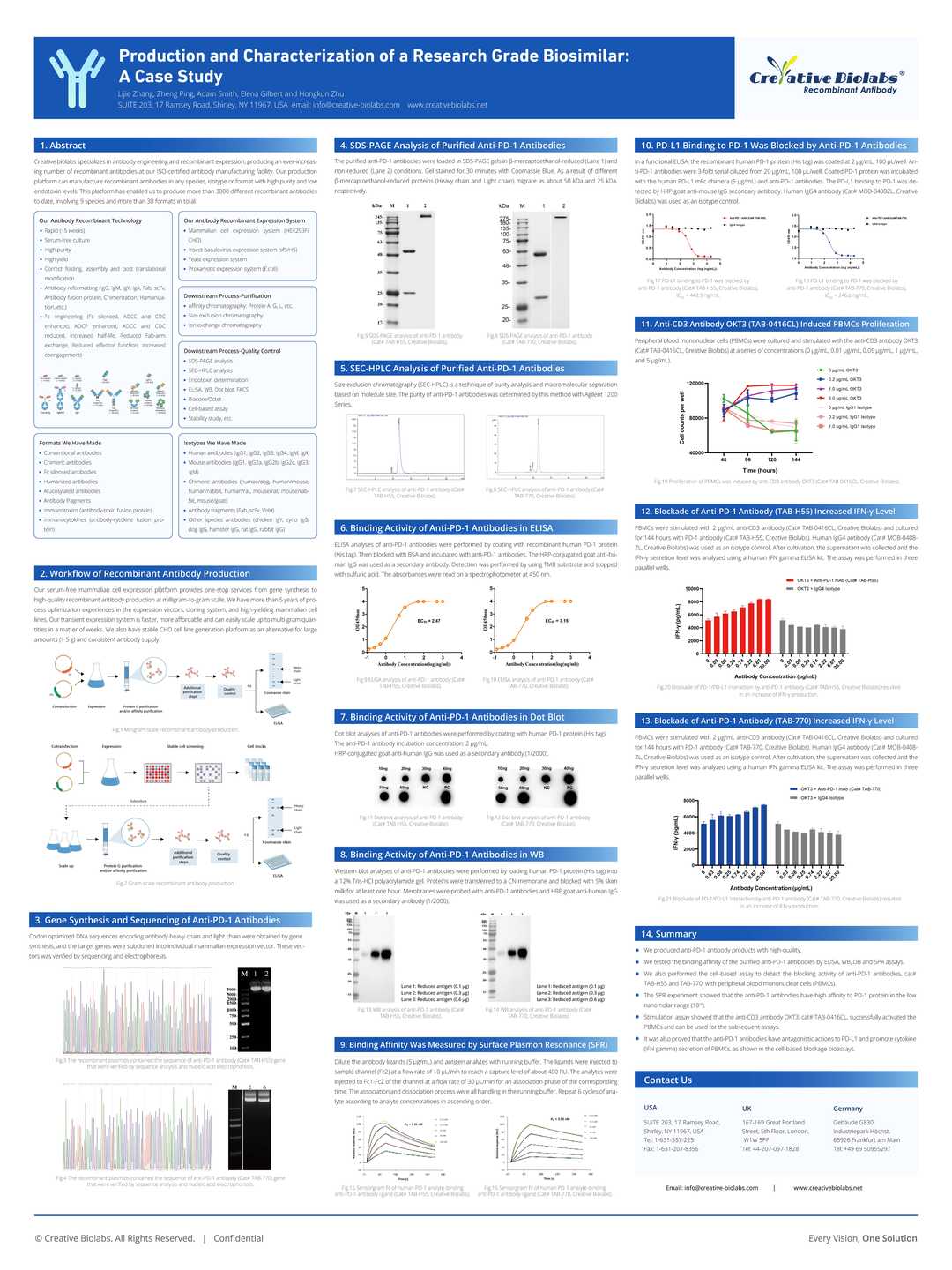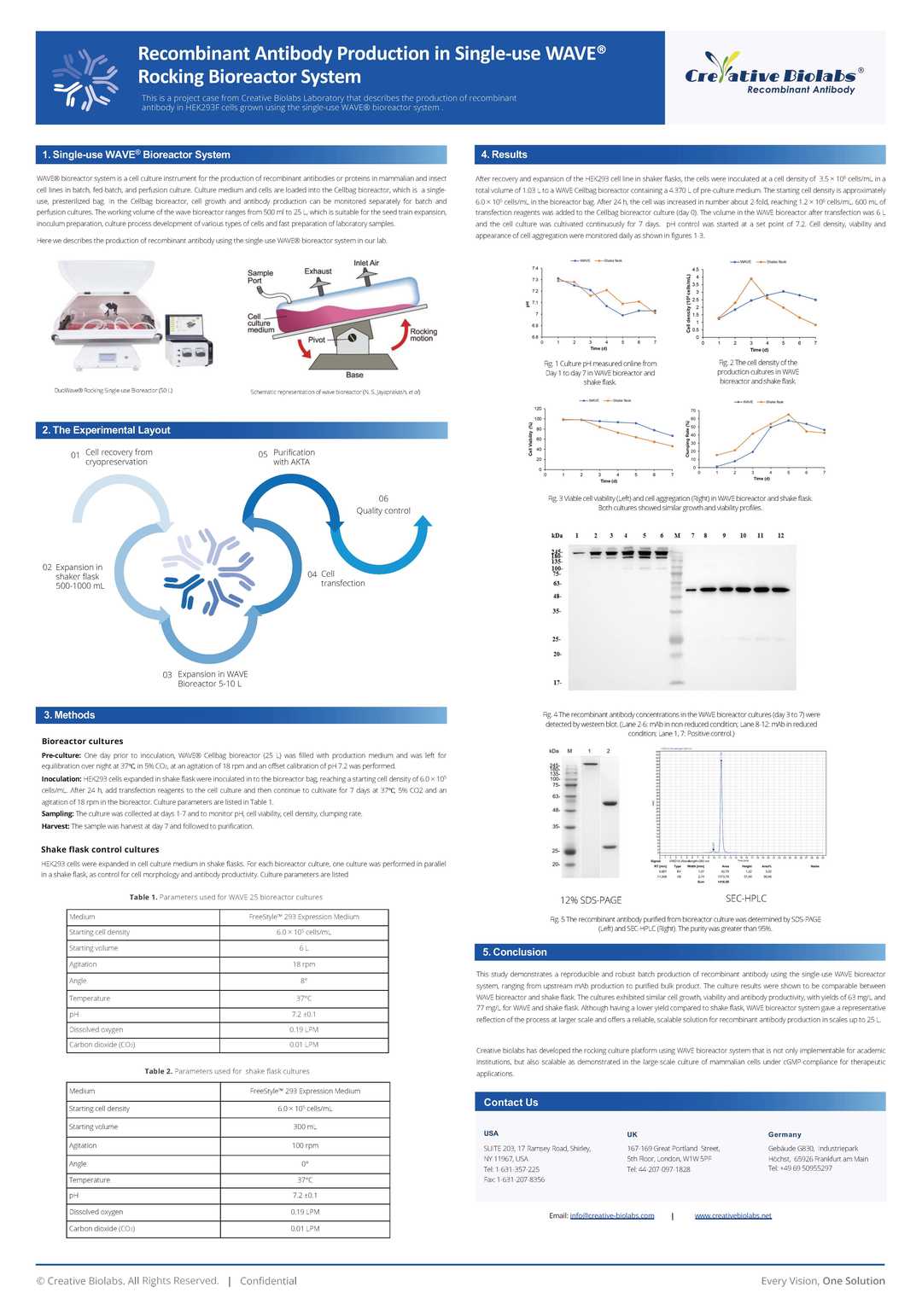Recombinant Mouse Anti-PMEL Antibody (clone 6G4-6F1-2H10)
CAT#: VS3-FY1156
This product is a recombinant mouse antibody that recognizes PMEL. This antibody has been reported for use in Immunohistochemistry-Paraffin. The clone 6G4-6F1-2H10 is specific for human PMEL. The antigen is synthetic peptides derived from human pmel.






Specifications
- Immunogen
- Synthetic peptides derived from human PMEL.
- Host Species
- Mouse
- Type
- Mouse IgG2b
- Specificity
- Human PMEL
- Species Reactivity
- Human
- Clone
- 6G4-6F1-2H10
- Applications
- Immunohistochemistry-Paraffin
- Conjugate
- Unconjugated
Product Property
- Purification
- Affinity Chromatography
- Purity
- >95% as determined by SDS-PAGE
- Buffer
- PBS, pH 7.3, 50% glycerol, 0.5% BSA
- Preservative
- 0.02% Sodium azide
- Storage
- Centrifuge briefly prior to opening vial. Store at +4°C short term (1-2 weeks). Aliquot and store at -20°C long term. Avoid repeated freeze/thaw cycles.
Applications
- Application Notes
- Immunohistochemistry-Paraffin: 1/100-1/500
Target
- Alternative Names
- P1; SI; SIL; ME20; P100; SILV; ME20M; gp100; ME20-M; PMEL17; D12S53E
- Gene ID
- 6490
- UniProt ID
- P40967
- Sequence Similarities
- Belongs to the PMEL/NMB family.
- Cellular Localization
- Endoplasmic reticulum, Endosome, Golgi apparatus, Membrane, Secreted
- Post Translation Modifications
- N- and O-glycosylated. A small amount of P1/P100 (major form) undergoes glycosylation in ER and Golgi compartments to yield P2/P120 (minor form). The mature P2 form leaves the trans-Golgi network and is mainly targeted to stage I melanosomes via the plasma membrane and clathrin-mediated endocytosis. Stage II melanosomes harbor only Golgi-modified fragments that are derived from M-alpha and that bear sialylated O-linked oligosaccharides. O-glycosylation of the RPT region is a conserved feature likely involved in amyloid sheet separation via electrostatic repulsion.
Undergoes multiple proteolytic processing. In a post-Golgi prelysosomal compartment, P2 is cleaved by a furin-like proprotein convertase (PC) into two disulfide-linked subunits: a large lumenal subunit, M-alpha/ME20-S, and an integral membrane subunit, M-beta. Despite cleavage, only a small fraction of M-alpha is secreted, as most M-alpha and M-beta remain associated with each other intracellularly via a disulfide bond (PubMed:12732614, PubMed:11694580, PubMed:15695812, PubMed:15096515, PubMed:17991747).
Once targeted to stage I melanosomes, beta-secretase BACE2 cleaves the M-beta fragment to release the amyloidogenic luminal fragment containing M-alpha and a small portion of M-beta N-terminus (PubMed:23754390).
M-alpha is further cleaved by metalloproteinases, likely ADAM10 or ADAM17, and still unknown proteases to yield subfragments that ultimately assemble into amyloid fibrils (PubMed:19047044).
The C-terminal fragment of M-beta is processed by the gamma-secretase complex to release a short intracytoplasmic domain (PubMed:19047044).
- Protein Refseq
- NP_001186982.1; NP_001186983.1; NP_001307050.1
- Function
- Forms physiological amyloids that play a central role in melanosome morphogenesis and pigmentation. The maturation of unpigmented premelanosomes from stage I to II is marked by assembly of processed amyloidogenic fragments into parallel fibrillar sheets, which elongate the vesicle into a striated ellipsoidal shape. In pigmented stage III and IV melanosomes, the amyloid matrix serves as a platform where eumelanin precursors accumulate at high local concentrations for pigment formation. May prevent pigmentation-associated toxicity by sequestering toxic reaction intermediates of eumelanin biosynthesis pathway.
Represents a potent melanoma-specific antigen. Among melanoma non-mutated self-peptides, G9-154 (KTWGQYWQV), G9-209 (ITDQVPFSV) and G9-280 (YLEPGPVTA), appear to act as immunodominant common epitopes that stimulate anti-tumor immune response mediated by HLA-A-restricted cytotoxic T cells.
Customer Review
There are currently no Customer reviews or questions for VS3-FY1156. Click the button above to contact us or submit your feedback about this product.
Submit Your Publication
Published with our product? Submit your paper and receive a 10% discount on your next order! Share your research to earn exclusive rewards.
Downloadable Resources
Download resources about recombinant antibody development and antibody engineering to boost your research.
Product Notes
This is a product of Creative Biolabs' Hi-Affi™ recombinant antibody portfolio, which has several benefits including:
• Increased sensitivity
• Confirmed specificity
• High repeatability
• Excellent batch-to-batch consistency
• Sustainable supply
• Animal-free production
See more details about Hi-Affi™ recombinant antibody benefits.
Datasheet
MSDS
COA
Certificate of Analysis LookupTo download a Certificate of Analysis, please enter a lot number in the search box below. Note: Certificate of Analysis not available for kit components.
Secondary Antibody
- CAT
- Product Name
Isotype Control
- CAT
- Product Name
Reconstitution Buffer
- CAT
- Product Name
Recommended Dilution Buffer
- CAT
- Product Name
See other products for "PMEL"
Select a product category from the dropdown menu below to view related products.
| CAT | Product Name | Application | Type |
|---|---|---|---|
| MOB-1280z | Mouse Anti-PMEL Recombinant Antibody (clone 21C9) | ICC, IF, IHC | Mouse IgG1 |
| HPAB-0046-LSX | Mouse Anti-PMEL Recombinant Antibody (HPAB-0046-LSX) | ELISA, WB, FC, IB, IF | Mouse Fab |
| HPAB-0047-LSX | Human Anti-PMEL Recombinant Antibody (HPAB-0047-LSX) | ELISA, WB, FC | Human IgG |
| ZG-0353U | Rabbit Anti-PMEL Recombinant Antibody (clone P14-V) | IHC-P | Rabbit IgG |
| VS-0723-WK139 | Human Anti-PMEL Recombinant Antibody (VS-0723-WK139) | FC | Chimeric (rabbit/human) IgG1 |
| CAT | Product Name | Application | Type |
|---|---|---|---|
| AGTO-G051E | Anti-PMEL immunotoxin (Fab)-PE | Cytotoxicity assay, Function study |
| CAT | Product Name | Application | Type |
|---|---|---|---|
| TAB-1047CL-F(E) | Anti-Human PMEL Recombinant Antibody Fab Fragment (A3F) | IHC, WB, FC | |
| TAB-1048CL-F(E) | Anti-Human PMEL Recombinant Antibody Fab Fragment (G11B) | IHC, WB, FC | |
| TAB-1049CL-F(E) | Anti-Human PMEL Recombinant Antibody Fab Fragment (J7E) | IHC, WB, FC | |
| TAB-1050CL-F(E) | Mouse Anti-PMEL Recombinant Antibody; Fab Fragment (TAB-1050CL-F(E)) | FC | Mouse Fab |
| TAB-1051CL-F(E) | Mouse Anti-PMEL Recombinant Antibody; Fab Fragment (TAB-1051CL-F(E)) | FC | Mouse Fab |
| CAT | Product Name | Application | Type |
|---|---|---|---|
| MOR-2761 | Hi-Affi™ Recombinant Rabbit Anti-PMEL Monoclonal Antibody (DS2761AB) | IHC-P | IgG |
| CAT | Product Name | Application | Type |
|---|---|---|---|
| HPAB-0046-LSX-S(P) | Mouse Anti-PMEL Recombinant Antibody; scFv Fragment (HPAB-0046-LSX-S(P)) | ELISA, WB, FC | Mouse scFv |
| HPAB-0047-LSX-S(P) | Mouse Anti-PMEL Recombinant Antibody; scFv Fragment (HPAB-0047-LSX-S(P)) | ELISA, WB, FC | Mouse scFv |
| CAT | Product Name | Application | Type |
|---|---|---|---|
| HPAB-0046-LSX-F(E) | Mouse Anti-PMEL Recombinant Antibody; Fab Fragment (HPAB-0046-LSX-F(E)) | ELISA, WB, FC | Mouse Fab |
| HPAB-0047-LSX-F(E) | Human Anti-PMEL Recombinant Antibody; Fab Fragment (HPAB-0047-LSX-F(E)) | ELISA, WB, FC | Chimeric Fab |
| CAT | Product Name | Application | Type |
|---|---|---|---|
| MHC-YF186 | H-2Db/HPV16 E7 (RAHYNIVTF) MHC Monomer | MHC Multimer | |
| MHC-YF214 | B*15:01/EBV EBNA4 (GQGGSPTAM) MHC Monomer | MHC Multimer | |
| MHC-YF225 | A*02:01/HPV16 E7 (YMLDLQPET) MHC Monomer | MHC Multimer | |
| MHC-YF295 | A*02:01/HPV E7 (YMLDLQPETT) MHC Monomer | MHC Multimer |
| CAT | Product Name | Application | Type |
|---|---|---|---|
| VS-0425-YC658 | Recombinant Anti-PMEL Vesicular Antibody, EV Displayed (VS-0425-YC658) | ELISA, FC, Cell-uptake |
| CAT | Product Name | Application | Type |
|---|---|---|---|
| VS-0525-XY5512 | Anti-PMEL Immunohistochemistry Kit | IHC | |
| VS-0525-XY5513 | Anti-Mouse PMEL Immunohistochemistry Kit | IHC | |
| VS-0525-XY5514 | Anti-Rat PMEL Immunohistochemistry Kit | IHC |
Popular Products

Application: ELISA, FC, IP, FuncS, IF, Neut, ICC

Application: ELISA, IP, FC, FuncS, Neut, IF, ICC

Application: ELISA, FC, IP, FuncS, IF, Neut, ICC

Application: WB, ELISA, FC, IP, FuncS, IF, Neut

Application: ELISA, Neut, IF, IP, FC, FuncS

Application: Neut, ELISA, IF, IP, FuncS, FC, ICC

Application: ELISA, WB, BLI, SPR

Application: WB, IHC, FC, Cyt, ELISA

Application: ELISA, IHC, FC, IP, IF, FuncS

Application: ELISA, IHC, FC, IP, IF, Inhib

Application: ELISA, Inhib, FC, Neut

Application: Inhib, FC, WB
For research use only. Not intended for any clinical use. No products from Creative Biolabs may be resold, modified for resale or used to manufacture commercial products without prior written approval from Creative Biolabs.
This site is protected by reCAPTCHA and the Google Privacy Policy and Terms of Service apply.















-3.jpg)





